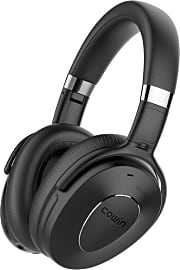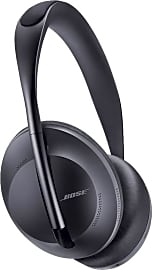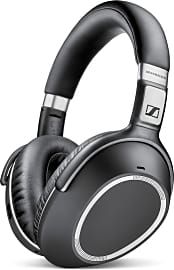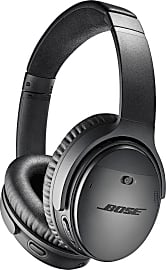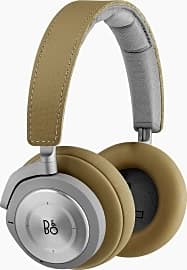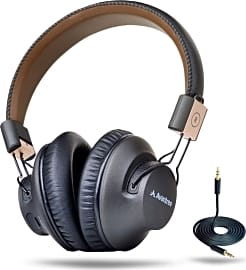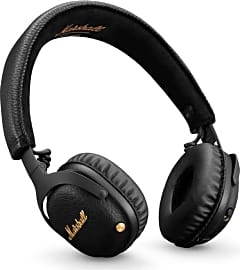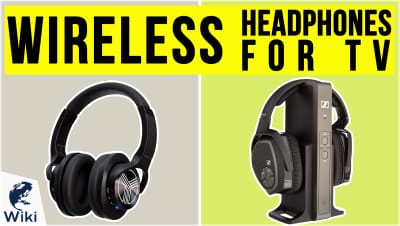The 10 Best Wireless Headphones

This wiki has been updated 40 times since it was first published in May of 2015. It's always a good time to cut cords. In fact, many of today's smartphones don't offer much of a choice in the matter, thanks to the demise of the 3.5-mm jack. Luckily, most modern devices can transmit hi-fidelity audio to these wireless headphones using one of several Bluetooth codecs. Our top choices offer the right mix of portability, sound quality, and convenient features. When users buy our independently chosen editorial picks, we may earn commissions to help fund the Wiki.
Editor's Notes
December 21, 2020:
During this update we replaced the Sony WH1000XM3 with their newer iteration, the Sony WH-1000XM4. This latter model has less sensitive, though still responsive, touch controls, resulting in less accidental activation, which was a common problem with the WH1000XM3. The WH-1000XM4 also offer the newer Bluetooth 5.0 codec as well as a few other features that reflect improving technology. We also replaced the Cowin SE7 with the Cowin SE8. Though a little more expensive, the SE8 offer better noise cancellation and support for AAC audio codecs. Another new addition is the recently-released Bose 700, which improve upon the already excellent performance of the Bose QuietComfort 35, but in a more stylish package.
April 25, 2019:
Wireless headphones seem to be advancing in quality about as fast as any other modern consumer electronics. Plus, you can spend just about as little or as much as you want and end up with a worthwhile pair of cans. If you're on the lower end of the budget spectrum, consider the TaoTronics or Avantree. They're impressive pieces of equipment for their incredibly reasonable prices. The Avantree are very comfortable and weigh very little, while the TaoTronics BH060 weigh more but also feature passable (though not perfect) noise canceling. The Cowin SE7s are only twice as much, making them still far less expensive than more common brand-name options, and they sport some great new technology such as Bluetooth 5.0.
If you're willing to spend considerably more, your options are greatly expanded. Marshall's Mid ANC are a great choice if you prefer on-ear headphones, which generally won't heat your ears up as much, though they don't isolate you from outside noise as much as circumaural cans do. The Bose SoundLink II are another relatively lightweight pair, though they're pretty costly for a non-noise-canceling model, and some users complain they don't offer the most durable build quality. If you're focused mostly on audio quality, the Pioneer S9 are definitely worth a look. They aren't too costly and feature the advanced AptX HD codec, which is a far cry better than standard SBC encoding.
Of course, if you're willing to shell out three hundred bucks or more on a pair of wireless headphones, you'll have a big decision to make. The Sennhesier PXC 550s offer arguably better sound than anything on the market, though their noise reduction isn't quite up to par with the rest, and they are a bit heavy. They're especially roomy, though, so if you have a big head or big ears, they're worth considering. Bose's QC35 II is no stranger to a rundown of any high-end headphones. They don't necessarily sound absolutely better than all the rest, but it's widely agreed that their noise canceling is practically second to none. Bang & Olufsen's H9i are possibly the best-looking out of the bunch, though their somewhat bulky construction and notable large price tag gives some people pause.
Which brings us to the Sony WH1000XM3. This is one of the most popular pairs of headphones eer released since the Bose QC35 II, and for good reason. Their battery life is exceptional, their sound quality is almost as good as anything on the market, and they support a range of codecs including AAC, AptX HD, and Sony's own LDAC. Keep in mind that LDAC will be somewhat wasted in high-interference environments where it'll likely be forced to switch to its low-quality mode. But you can force the headphones to utilize AptX HD, which will decrease power draw on your phone or tablet, and outside of true high-res audio sources, you almost certainly won't be able to notice a difference in quality. Also, these headphones will shut off automatically if they're not connected to any source for a few minutes, so if you plan to use them simply to take a nap with no music playing, you'll need a dead-end 3.5-millimeter plug to simulate a plugged-in connection. Also they cost a lot. But they are quite stylish, they sound fantastic, they're easy to customize using Sony's Headphones app, and their noise canceling is extremely capable.
Special Honors
Apple AirPods Max As expected, the Apple AirPods Max have a sleek, somewhat futuristic aesthetic that certainly makes them stand apart from many others. They also come in several colors and can be ordered with custom engraving. And, most importantly, their sound is as good as their looks. apple.com
The Rise of Headphone Culture
Figuring out what to do with your wires became a matter of fashion.
Before headphones replaced shoulder-riding boomboxes, virtually eliminating music-made noise pollution on the streets of major cities around the world, headphones were made for work, not leisure.
Headphones were not originally designed for us to keep our music to ourselves. On the contrary, they were designed, in part, to allow late 19th-century telephone operators to cram into a single space like sardines in a can without fear of eavesdropping on other operators' calls and therefore dropping the ball on their own. Not only that, but an operator only has two hands and no longer having to hold a receiver to one ear allowed operators to work more quickly and more efficiently, reducing the number of operators required to connect calls as telephones became increasingly popular, everyday items.
Needless to say, the Navy took great interest in the first full pair of headphones invented in 1910 by Nathaniel Baldwin--a fundamentalist Mormon who got rich selling a hundred pairs only to go bankrupt funneling all of his proceeds into a campaign against monogamy. Due to the superior sound quality of Baldwin's invention, early radar technicians and, later, sonar technicians, could communicate through the din of naval artillery constantly firing overhead.
By the 1980s, headphones surged in popularity. The invention of the Sony Walkman allowed people to walk to work or ride the subway with a newfound lack of stress and frustration. What was once a chore of trying to ignore the oft-infuriating subject matter of private conversations held in public quickly became an enjoyable exercise in literally tuning people out.
Unfortunately, not getting caught up in small talk anymore meant getting caught up in wires, sometimes absurdly long, other times obnoxiously short. Figuring out what to do with your wires became a matter of fashion. There were hot-pink running suits with special pockets that carried your Walkman just a little bit closer to your ears, circular fanny packs to advertise the fact you had finally upgraded to a Discman, and even motorcycle jackets with holes near the collar so your wires don't flap in the wind. But as with all technology, practical solutions eventually rendered the fashionable ones obsolete.
Thanks to the introduction of portable mp3 players and wireless headphone technology in the early 2000s, you can now carry your music around in the tiny change pocket of your jeans and never have to worry about getting hung up on a doorknob. Better yet, you can even wear top-of-the-line stereo headsets without having to stuff ten feet of zip-tied cord in your pocket.
The Pros and Cons of the Two Types of Noise Cancellation
When choosing a pair of noise cancelling headphones, regardless of whether or not they are wireless, it is important to understand the two types of noise cancellation, active noise control and passive noise isolation, otherwise known as soundproofing. Where active noise control uses additional power to reduce the amount of noise in the signal, passive noise isolation uses additional materials that reduce the amount of noise getting in or out of a certain area.
One good look at a bulky pair of headphones will tell you that most noise cancelling headphones are of the passive type. There are a few reasons for this. First, by requiring an additional power source dedicated solely to producing frequencies that cancel noise on both the left and the right sides of the headphones, the amount of total power required for the headphones to function properly is drastically increased. This results in either a significant loss of battery life or the need for additional batteries, which in turn significantly increases the overall weight of the headphones.
Soundproofing, on the other hand, can be achieved with the use of cheap, lightweight materials, as is evident by the use of empty egg cartons nailed to the walls inside many recording studios. Not only are they cheaper and weigh less, but the same materials can be shaped and fitted for comfort, in a sense killing two birds with one stone.
Why Go Wireless?
Of all the many reasons to ditch corded headphones in favor wireless ones, the argument I find most convincing, and the one that often goes unstated, is that sometimes the best technology is technology you forget that you're using. It's invisible. You aren't constantly reminded that you're wearing contact lenses every time you try to comb your hair or wash your face. You aren't constantly reminded that you have a prosthetic leg that fits perfectly in your favorite pair of pants and your favorite pair of shoes because people are no longer staring at you all the time.
Likewise, it's easy to forget you're wearing headphones when they're wireless. They don't get caught on the edge of your desk or the arm of a friend who just gave you a hug. The jack don't get in the way and poke your palm when you decide to play a smartphone game instead of listen to music or a podcast. And they don't come unplugged when you toss your bag on the counter or your pants on the floor and walk away.
Wireless headphones aren't about looking chic when you walk down the street to get coffee. They're about getting lost in whatever you're listening to and never being yanked out of the comfort zone they put you in.


